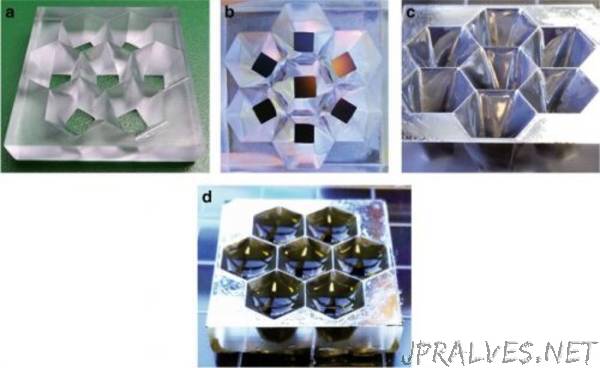
“Stanford researchers successfully manufactured high quality optical components using commercially available 3D printing materials. Researchers print optical surface (mirrors, arrays, lens molds), and coat it with a gel. Following curing, the optically smooth surface can be vacuum coated with Al and finished as a mirror or used directly as a mold. The method can be used to print mirrors, solar concentrators, lenses and optical elements of microscopes at a much lower cost. This gel smoothing technique can be used with commercial 3D printers (resolution of tens of microns) and the finished surfaces fabricated gave a rms (root mean square) surface roughness of around 2 nm. 3D printed optics were easy to fabricate, low cost, had design freedom and were also customizable, light weight, and low on material waste due to the additive nature of 3D printing.
As printed bare 3D printed surface had a roughness of more than 70nm rms (root mean square surface roughness). The smoothening technique reduced this by more than one order of magnitude to 2.3nm rms (see Figure 2a and 2b), which is well within the criterion for high quality optical surfaces of one twentieth of a wavelength for visible and infrared light. The whole process is very fast. It is possible to go from a conceptual design to a working high quality optical-quality prototype reflector or mold in probably less than a day.”
